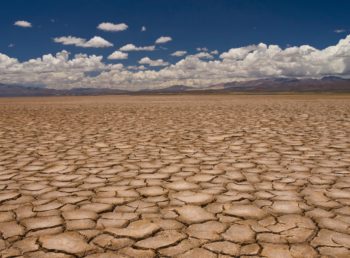 I hold a few views that aren’t popular with the mainstream media. And one of them is that global climate is about 15 years away from entering a cooler period. The current solar cycle 24 is shaping up to be the weakest in a century, and the following cycle is projected to be even weaker than that. So, what concerns me is that, 15 years from now, the earth could enter a period of colder climate. Global agricultural yields would fall, and the poorest inhabitants could face famine and starvation.
I hold a few views that aren’t popular with the mainstream media. And one of them is that global climate is about 15 years away from entering a cooler period. The current solar cycle 24 is shaping up to be the weakest in a century, and the following cycle is projected to be even weaker than that. So, what concerns me is that, 15 years from now, the earth could enter a period of colder climate. Global agricultural yields would fall, and the poorest inhabitants could face famine and starvation.
Obviously this contradicts the perceived wisdom of a coming, global warming apocalypse. But the prevailing theory of anthropogenic global warming (AGW) simply discounts the notion that variations in solar activity can drive changes in climate. So, I’m doubly the heretic here. Not only do I reject the carbon dioxide disaster hypothesis, but I see things heading the other way.
I’m not alone in this view, however. But despite such concerns, some in the climate community are now starting to ponder a new experiment. They’re asking whether man can potentially re-engineer the atmosphere a bit—to actually cool it down— before a catastrophic warming disaster befalls us.
The Senate appropriations committee recently passed a spending bill for the Department of Energy that includes provisions detailing the research of “albedo modification.” (Albedo is the term used to describe the amount of incoming sunlight that is reflected back into space.) The appropriation would direct funds to study the possibility of seeding the atmosphere with aerosol particles, thus increasing albedo and cooling the planet. Such a “modification” would build on a February 2015 report from the National Academy of Sciences (NAS), ‘Climate Intervention: Reflecting Sunlight to Cool Earth,’ that explored the basics of such a concept.
Aerosol dispersal in the atmosphere can undoubtedly have an effect on climate. The 1991 eruption of the Mount Pinatubo volcano dispersed vast quantities of sulfur dioxide, which converted to aerosols and reduced incoming sunlight. This led to subsequent cooling of roughly half a degree celsius in the northern hemisphere for several months.
The idea is workable. But as NAS observed, it shouldn’t be implemented without further study, since the risks and benefits are as yet uncertain.
In my humble opinion, such an experiment would be a bad idea in actual practice. And here’s why. If we review the past few thousands of years of global climate swings (including the “Roman Warm Period,” the “Dark Ages,” the “Medieval Warm Period,” the “Little Ice Age,” and the “Modern Warm Period”), what we see are very clear swings of global temperature that correspond with long-term ups and downs of solar output.
A great example: 1816 was “The Year Without a Summer.” During a cold period of already low solar activity, (known as the “Dalton Minimum”) a volcanic eruption in the Pacific led to even greater cooling. The result? Snowfall in New England in June, frozen summer ground in upstate New York, and widespread crop failures.
We’ve seen about one degree Celsius of warming since recordkeeping began in the 1880s, with the 1930s still the warmest decade to date. But the pendulum is starting to swing the other way, and we now face the possibility of a colder climate. Russian and Chinese scientists are well ahead of their western counterparts in this area, and are already urging a stockpiling of food to ensure that the world’s most impoverished people can withstand such a downturn.
Seeding the atmosphere to enhance cooling could produce a double whammy of colder temperatures on top of an already cooling trajectory, potentially putting lives at risk. Ironically, the main concern of climate advocates is that man has already impacted the global climate in a negative way. If that’s the case, then further tinkering should be considered equally unacceptable.
Studying such a concept could prove interesting for climate researchers. But putting it into practice poses real risks.
Steven Capozzola has spent the past 15 years working on issues related to manufacturing, global trade, and energy policy.
















